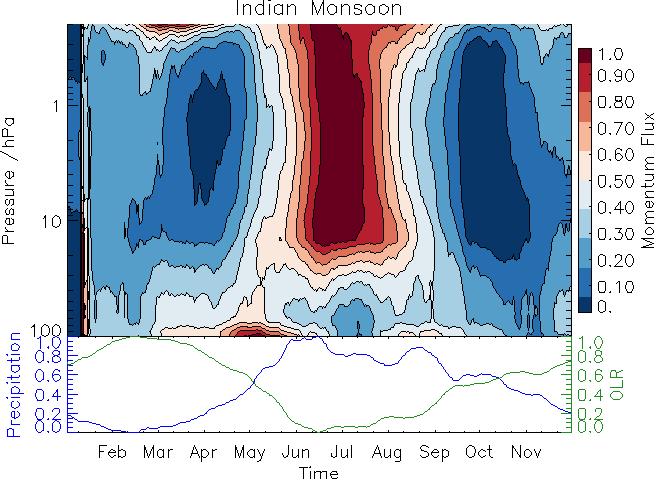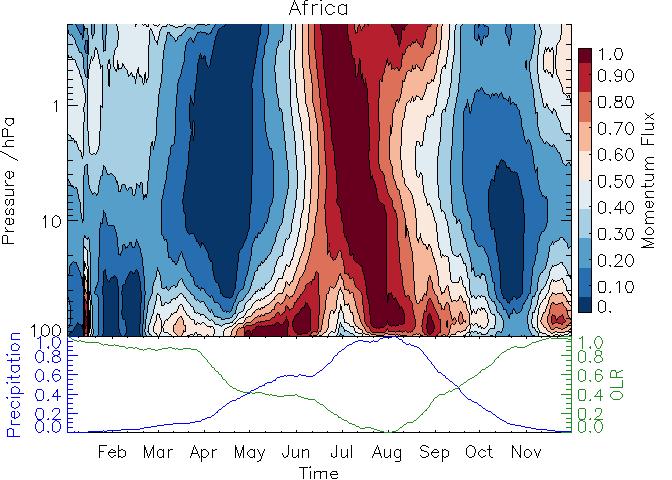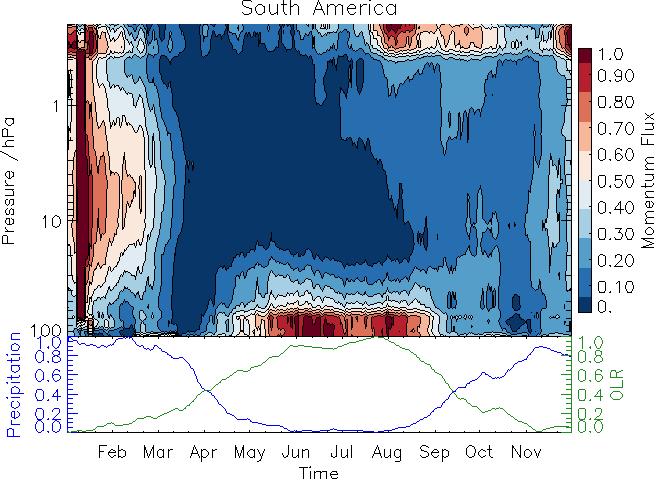Monsoons as sources of Gravity Waves
HIRDLS observations have shown a strong increase in gravity wave momentum flux (MF) in the stratosphere as a result of deep convection due to the monsoons. Annualised measurements of GW MF from HIRDLS (Figure 1, top) show a strong positive correlation with rainfall (blue line) and a strong anticorrelation with outgoing longwave radiation (green line), a standard proxy for convective activity. Measurements suggest that the Indian monsoon leads to a 25% increase in the measured momentum flux levels in this region, with half the annual total MF generated during the monsoon season. This holds true for other monsoon regions across the globe (e.g. Africa, Figure 2).The South American Monsoon (Figure 3) behaves similarly, but is weaker, and peaks at the beginning of the year.

Figure 1. (Upper frame-gravity wave momentum flux as a function of altitude and time of year; lower frame-precipitation and OLR as a function of time of year, all for the Indian monsoon.

Figure 2. Upper frame-gravity wave momentum flux as a function of altitude and time of year; lower frame-precipitation and OLR as a function of time of year, all for the African monsoon.

Figure 3. Upper frame-gravity wave momentum flux as a function of altitude and time of year; lower frame-precipitation and OLR as a function of time of year, all for the South American monsoon.
Reference:
Wright, C.J. and J.C. Gille [2011], HIRDLS observations of gravity wave momentum fluxes over the monsoon regions, J. Geophys,Res. 116, D12103, doi:10.1029/2011JD15725.
